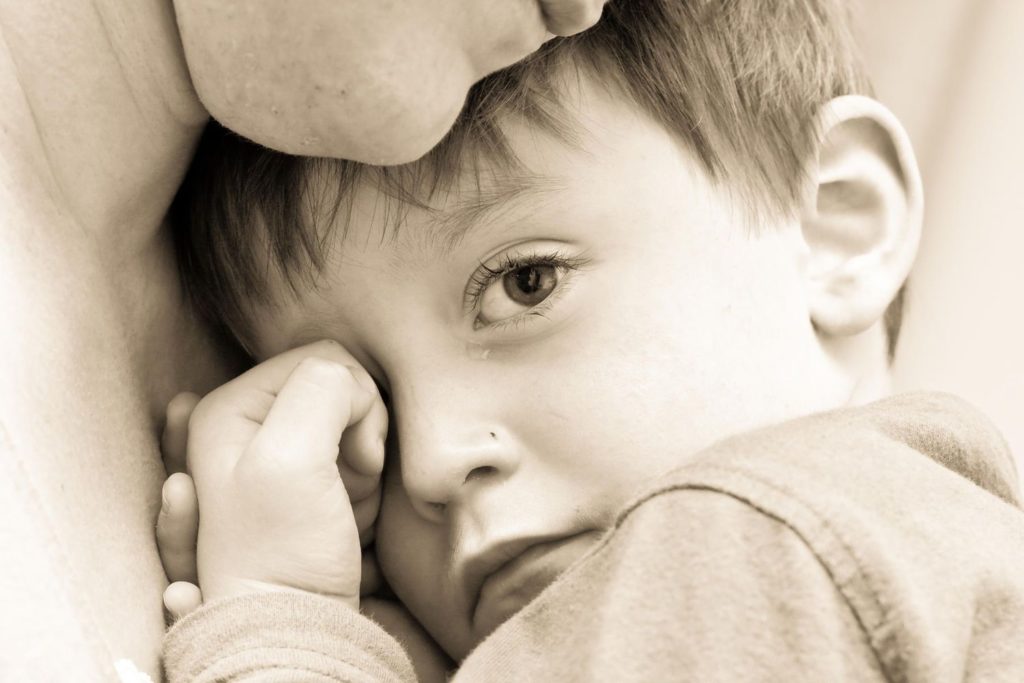Dealing with Separation Anxiety

Separation Anxiety peaks between 10 to 18 months and usually subsides around two to three years of age. However, some children can show signs of this as early as six months when they begin to develop object permanence.
Children of all ages thrive on love and connection. When this connection is temporarily lost (e.g. a parent leaves the family home for work or travel, the child attends daycare, a parent is distracted, a new sibling is introduced to the family, or other routine changes that may bring about uncertainty and insecurity), children are likely to exert some of the following behaviors to show that they are “off track”:
- Aggressive behavior (biting, pinching, hitting) stemming from fear.
- Forcefully affectionate.
- Withdrawal from others.
- Has a limited attention span ‒ changing from one activity to another.
- Clingy, whiny, picky, sensitive, high needs.
- Needs a special object (e.g. comforter) to keep him from feeling upset
- Difficulty sleeping without parental intervention and/or disturbed sleep patterns
“Unresolved fears about separation are often at the root of difficult behaviors.” ‒Patty Wipfler, Hand in Hand Parenting
1. PLAN IN ADVANCE AND SAY YOUR GOODBYES
Letting your child know a few days before you leave may be necessary to allow a long, tearful goodbye to relieve your child of any pain and fear surrounding the separation (keep in mind that these may be accumulated feelings from previous separations which may/may not have been acknowledged). Initially, your child may need to offload feelings (by crying) for 30 to 60 minutes (or longer). The longer they are supported to do this, the easier these separations will be in future. If you are unable to sit with them for this amount of time, then employing “check-ins” such as “I need to go and water the garden now, but I’ll come back in a couple of minutes to check on you”. Repeated cries over several days or weeks may be necessary to relieve all of the child’s fears.
2. CONNECT
When your child feels close to you, he/she will feel safe to cry and express their feelings around the impending separation. Encourage your child to cry as hard and for as long as necessary. Schedule some quality one-on-one time in advance, and use plenty of eye contact, cuddles, and physical closeness. Listen lovingly as required if your child needs to cry or tantrum – avoiding scolding, shaming or punishments.
3. DON’T DISTRACT
Some parents feel it will be easier to sneak out without saying goodbye for the fear of conflict/upset/tantrums/crying. This often only makes things worse, adding to a child’s fears and insecurities – i.e. your child might feel confused or upset when he/she realizes that you’re not around and might be more difficult to settle the next time that you leave him/her. ALWAYS tell your child when and where you are going and when you will be back ‒ some (young) children may need this forewarning, even, at times, when you are leaving them to go to the bathroom or into another room of the house.
“Most of us have the strong temptation to distract a crying child with games, songs, or toys, to discount her feelings by telling her it’s okay and that she shouldn’t cry. But to ensure healthy emotional development, a child’s feelings of fear and loss during separation need to be expressed and heard, not erased or invalidated.” ‒ Janet Lansbury.
4. USE AN ATTACHMENT BRIDGE
Psychotherapist and parenting educator, Andrea Nair, suggests the use of an attachment bridge to help ease anxiety around separation. An attachment bridge refers to using some form of object or words to connect the time that you are together – over the time you are apart, to the next time that you are together again. This helps to comfort them and ease any separation anxiety that they may be feeling. It can include giving them a belonging of yours to keep until you return, leaving little notes/cards, video calls, or offering comments such as “when I come back after work, I am going to give you three hugs and check that your eyes are still blue”. The key to an attachment bridge is ensuring that your child knows when they will see you again.
5. ENSURE SAFETY AND FAMILIARITY
Where possible, It helps if your child is familiar with the place they are staying and has a solid connection with whom they are staying with. For childcare settings, attend an orientation in advance. If they will be staying with Grandma/Dad/friend ‒ ensure that they have had connection time with this person previously and that they know that they will be well-cared for. Tell your child “Grandma (or friend, or childcare provider) will take good care of you. I’ll be back. I’ll always come back to you”.
6. VALIDATE YOUR CHILD’S FEELINGS
We are conditioned to prevent crying, conflict and upset by dismissing uncomfortable feelings ‒ e.g.: “Don’t be silly”, “I am only going for a little while” or “It’s alright, don’t cry.” Instead, acknowledge how difficult this situation is for your child – e.g. “I know you don’t want mommy to leave. I am sorry I have to leave you to (e.g. go to work)”. I am here now. Offer validation, love, and support them to release their feelings of fear, frustration, anxiety, hurt, insecurity and uncertainty through crying.
If you have any other tools or tips that you have used to help your child deal with their fears around separation – I’d love to hear your feedback! Love, Sophie
